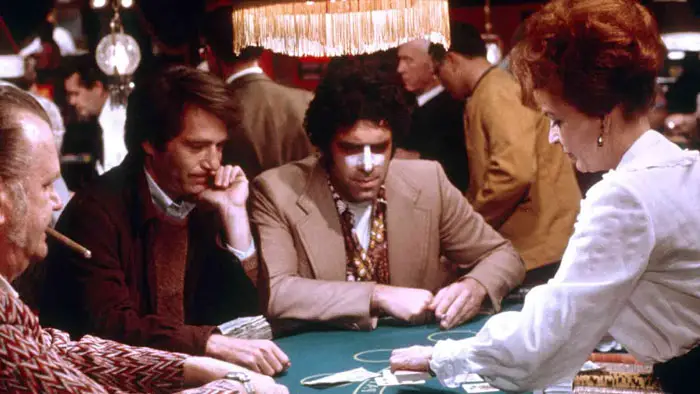
For a thriller to succeed it must rely on the unknown, that x factor that keeps audiences and characters alike guessing until the mysteries are unraveled and the thrill becomes sedated and resolved. Typically in modern films the unknown is often predictable and derivative to the point of cynicism and tedium; the audience neither cares for the characters threatened by external forces and often find themselves crossing their arms at their chests and arching their eyebrows, bored; uninterested; upset at having wasted their time watching a film that fails to thrill or entertain.
While John Murlowski’s Black Cadillac is a film we’ve seen many times before, its taut direction and loyalty to its premise ultimately saves it from becoming another run-of-the-mill, high speed thriller devoid of suspense and characters worth rooting for.
This is familiar territory for those of you who’ve seen movies like Joy Ride and Duel. After three Minnesota guys in their early twenties gallivant around Wisconsin bars with fake Ids, a mysterious black Cadillac follows and chases them for no apparent reason after they pick up a stranded police officer, wonderfully played by Randy Quaid, on their way back home.
Essentially an exercise in suspense, Black Cadillac is a fast-paced, extremely entertaining joy ride that manages to live up to its premise. The tension conveyed by the actors and the tight direction builds upon, and elevates, the mystery of the nefarious Cadillac. Like Spielberg’s Duel, the titular car takes on an ominous presence; it is as though the car itself, and not the mysterious man or woman driving it, is as real and terrifying as any entity or monster in a truly terrifying horror movie.
Black Cadillac’s strengths lie in its willingness to take a breather from the tense chase scenes and to focus on developing believable characters. What we get here are characters that run the spectrum from callow innocence to cynicism to curious incorrigibility. These are characters we like, who entertain us, and, yes, inspire us to care for them and their safety in light of these bizarre circumstances.
And the circumstances are bizarre, as bizarre as they are in any well-crafted thriller; in a genre in which illusion is the name of the game and everything is as fragile as a glass house—one misplaced scene, one expository line too many, and the entire premise shatters.
But Murlowski, who’s previous efforts produced a bad Amityville sequel and a worse Hulk Hogan movie, proves adept at managing a taut thriller that continues to create tension when the story should have exhausted itself. The key to Black Cadillac’s success is its unwillingness to question the motive of its main driving force—the curious incident of the homicidal car—while the mayhem ensues; only in the aftermath are things explained. While the resolution may appear too gimmicky and predictable, with a film like this the audience may be willing to forgive the uninspired destination as long as the ride was one worth taking. And, with its genuine suspense and engaging characters, Black Cadillac is indeed a ride worth taking.
